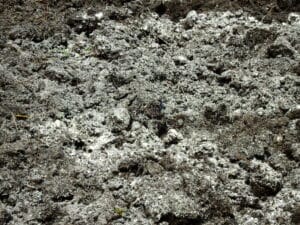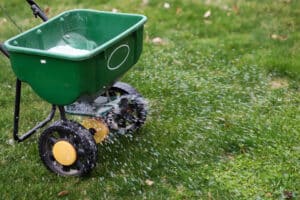The Monstera plant, also known as the “Swiss cheese plant” for its leaf holes, has become popular for its beauty and ability to purify the air. The split-leaf philodendron can make your indoor space more attractive, but only if you grow and care for it properly. Read the following guide for tips on how to care for a Monstera plant properly.
Find Lawn Help
- See our list of top lawn care companies based on in-depth research.
- Select the company that best meets your needs.
- Get a free, no-obligation quote for your home.
Get a Quote From Lawn Professionals Near You
Compare quotes from local pros
Clicking “Get Your Estimate” submits your data to Home Service Quotes, which will process your data in accordance with the Home Service Quotes Privacy Policy.

Lime Soil Amendment

Lawn Fertilization
What Is a Monstera Plant?
Monstera are tropical plants that grow in warm, humid environments and have heart-shaped leaves. They’ve become common among homeowners because they’re easy for anyone to grow and maintain. Monstera plants reach maturity in three years, during which time they develop holes in their vines that have earned them the common name of “Swiss cheese plant.”
Monstera plants are members of the Araceae family, grow in rainforests from southern Mexico to Panama, and are toxic to humans and pets. Those who live in hardiness zones 10 and 11 can grow Monstera plants outdoors. They add about 1–2 feet each year.
How Much Light Do Monstera Plants Need?
Monstera houseplants thrive in partial-light environments with temperatures between 65 and 85 degrees Fahrenheit. If left in direct sunlight, the leaves could burn, suffer yellowing effects, or curl.
Keep the Monstera plant in a section of your kitchen or living room that receives enough light to gently dapple its leaves. Give it access to bright, outdoor light once a year to promote growth.
What Is the Best Soil for Monstera Plants?
Monstera plants have coarse root systems and thrive in moderately moist environments. Plant them in peat-based, organic soil that drains easily. Soil that’s too wet could damage the plant or even prevent it from rooting.
If you grow your Monstera plant outside as part of a yard landscaping project, opt for either light sandy, medium loamy, or heavy clay soils that have an acidic or neutral pH. Make sure that the soil isn’t too moist.
How Much Should You Water Your Monstera Plant?
- Water your Monstera houseplant every one or two weeks during the growing season and even less frequently during the fall and winter.
Make sure that its container has holes for drainage and don’t return any excess water to the container. Soil should completely dry out between waterings. If the Monstera plant’s soil feels slightly damp, skip watering it or add perlite.
Be careful to not overwater or underwater your Monstera. If the plant is underwatered, it may droop, turn yellow, or curl. If the plant becomes overwatered, roots could become mushy, leaves may suffer wilting or drooping effects, and overall growth can slow. Drain excess water from the container if you notice these signs, and wait at least a week before watering the plant again.
What Is the Ideal Temperature and Humidity Level for Monstera Plants?
Monstera plants prefer high humidity and warm weather. Temperatures below 60 degrees Fahrenheit will slow the plant’s growth, while temperatures above 85 might add stress. If you’re comfortable, the Monstera plant is probably also comfortable.
Run a humidifier by the Monstera to keep humidity at optimal levels or mist leaves with water for extra moisture. If humidity gets too low, the plant could turn brown or attract pests. Make sure that too much water isn’t pooling at the base of the plant container since this could cause the roots to become swampy.
Should You Fertilize Your Monstera Plant?
Monstera plants can benefit from occasional fertilizer applications. Mix a high-quality fertilizer with the plant’s potting mix every few weeks during the growing season to help its leaves grow. Dilute the fertilizer first by placing 1/2 teaspoon of the fertilizer into 1 gallon of water. Use the diluted fertilizer in place of watering, and pour the mixture into the soil until it seeps out of the container’s drainage holes. Discard any excess, diluted fertilizer.
Quick Tip
- Slowly scale back fertilizer use during the fall and stop using it during the winter. Watch out for signs that you’re using too much fertilizer, such as discolored leaves, drooping leaves, or a saltlike accumulation on the soil’s surface.
Should You Prune Your Monstera Plant?
Prune Monstera plants in the spring during prime growing season. You can either trim aerial roots or simply tuck them back into their container.
To prune your Monstera, follow these steps:
- Remove any yellow or dying leaves and throw them away.
- Use pruning shears or a sharp knife to cut leaves at the main stem. Make a clean cut to remove a leaf from the plant, and throw it into the trash or compost bin.
- Redirect any unruly vines as you see fit. Be gentle with the main stem and take care not to make cuts directly into the stem.
Monstera sap can irritate the skin, so wear rubber gloves when handling the plant and wash your hands thoroughly after pruning.
Can You Propagate Your Own Monstera Plants?
You can propagate Monstera plants through water propagation methods, air propagation methods, air layering, or stem cuttings.
Follow the steps below to cut the stem:
- Cut off a Monstera plant stem that includes a node and an aerial root. The clipping should also have at least one or two healthy leaves. Sprinkle some cinnamon on the area of the main stem where you removed the clipping to help it heal.
- Place the Monstera clipping into a glass of filtered water. Change the water every few days until you see a clump of roots growing. This process could take several months.
- Remove the new growth and place it into a pot with fresh soil. Make sure the young plant stays moist as it adjusts to its new environment.
Pay special attention to the new plant for the first few months. Don’t overwater or underwater it. Don’t overfertilize the plant either, since this could lead to root damage.
What Are Some Common Problems With Monstera Plants?
While Monstera plants are simple to take care of, they’re prone to a few issues. If your Monstera has yellow leaves, it might be getting too much sunlight or water. Check the soil moisture before watering and ensure that your houseplant only receives indirect sun.
You might also notice brown tips on the leaves of your Monstera, which could be the product of inconsistent watering or too much fertilizer. Flush the soil and fertilize the plant less aggressively if you notice this.
Monstera are also prone to pest infestations from spider mites and fungus gnats. To treat a pest infestation, try insecticidal soap. You can also clean the leaves thoroughly to remove bug eggs and mites. Use gloves during this process to prevent irritated skin.
Our Conclusion
Monstera plants are beautiful, easy to maintain, and can purify your house’s air. These plants will only thrive if you care for them correctly, however, so keep them in warm, humid climates and in areas of indirect sunlight. With care, time, and dedication, you can build a nursery of beautiful, purifying Monstera plants, whether you grow them inside or in a backyard oasis.
FAQ About Monstera Plants
Is Monstera a good indoor plant?
Monstera plants are good indoor plants that feature beautiful, shiny leaves and air-purifying qualities. They’re some of the most common houseplants along with snake plants, rubber trees, and fiddle-leaf figs.
Where should I put Monstera in my house?
Put your Monstera plant in a warm area that has access to bright indirect light. Monstera thrives in warm, humid climates.
Does Monstera clean the air?
Monstera has air-purifying effects according to some studies and can even purge your home of cancer-causing toxins such benzyne, formaldehyde, and ammonia.
How often should I water my Monstera?
You should water a Monstera plant every one or two weeks. Check the soil’s moisture level to prevent overwatering.
How much light does a Monstera need?
Most species of Monstera, including Monstera adansonii and Monstera deliciosa, need eight to 10 hours of indirect light per day.





